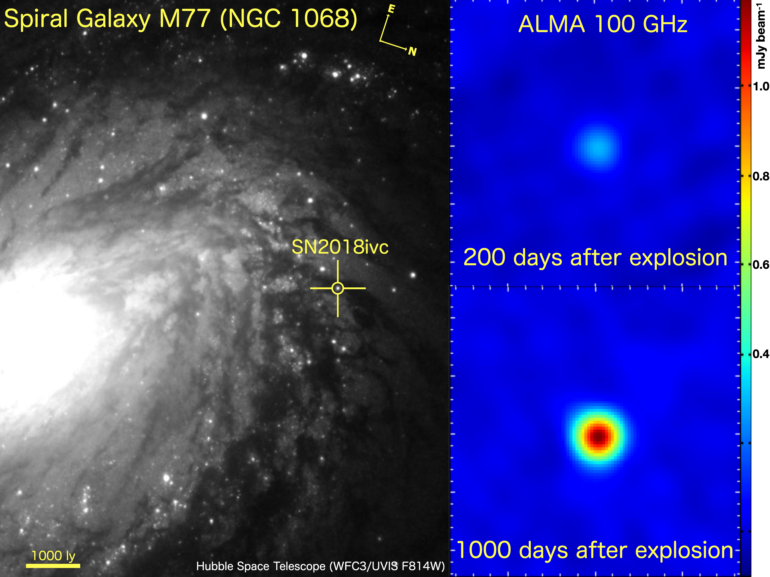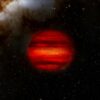Astronomers have discovered a supernova exhibiting unprecedented rebrightening at millimeter wavelengths, providing an intermediate case between two types of supernovae: those of solitary stars and those in close-binary systems.
Many massive stars end their lives in a catastrophic explosion known as a supernova (SN). Supernovae increase rapidly in brightness, and then fade over the course of several months.
Astronomers have long known that the presence or absence of a close binary companion can affect the evolution of massive stars. In a close binary system, gravitational interactions with the binary companion will strip large amounts of material from the SN progenitor long before the final explosion. In these cases, the progenitor will be quiet up until the time of the actual SN. On the other hand, in the case of an SN progenitor with no binary companion or a distant companion, leading up to the SN explosion the progenitor will keep most of its initial mass.
Astronomers wanted to know what happens when the binary is not too close and not too distant. The break came when an international research team, led by Keiichi Maeda (Professor at the Graduate School of Science, Kyoto University) and Tomonari Michiyama (ALMA Joint Postdoctoral Fellow at the Graduate School of Science, Osaka University), used ALMA (The Atacama Large Millimeter/submillimeter Array) to monitor a supernova known as SN 2018ivc as it dimmed for about 200 days after the initial explosion.
The results showed that SN 2018ivc was an unusual object, so the team decided to check up on it again, at about 1,000 days after the explosion. They found that the object was actually rebrightening, the first time this phenomenon had ever been observed in millimeter wavelength radiation.
Comparison to numerical modeling suggests that interaction with an intermediate-distance binary companion about 1500 years before the SN explosion created a large hollow shell of circumstellar medium. At 200 days after the SN, the ejecta flying out from the explosion had yet to reach the shell. Then sometime between 200 and 1,000 days, the ejecta collided with the circumstellar medium.
These results appeared as “Resurrection of Type IIL Supernova 2018ivc: Implications for a Binary Evolution Sequence Connecting Hydrogen-rich and Hydrogen-poor Progenitors” in The Astrophysical Journal Letters on March 1, 2023.
More information:
Keiichi Maeda et al, Resurrection of Type IIL Supernova 2018ivc: Implications for a Binary Evolution Sequence Connecting Hydrogen-rich and Hydrogen-poor Progenitors, The Astrophysical Journal Letters (2023). DOI: 10.3847/2041-8213/acb25e
Provided by
National Astronomical Observatory of Japan
Citation:
Resurrected supernova provides missing link between two types (2023, March 2)



